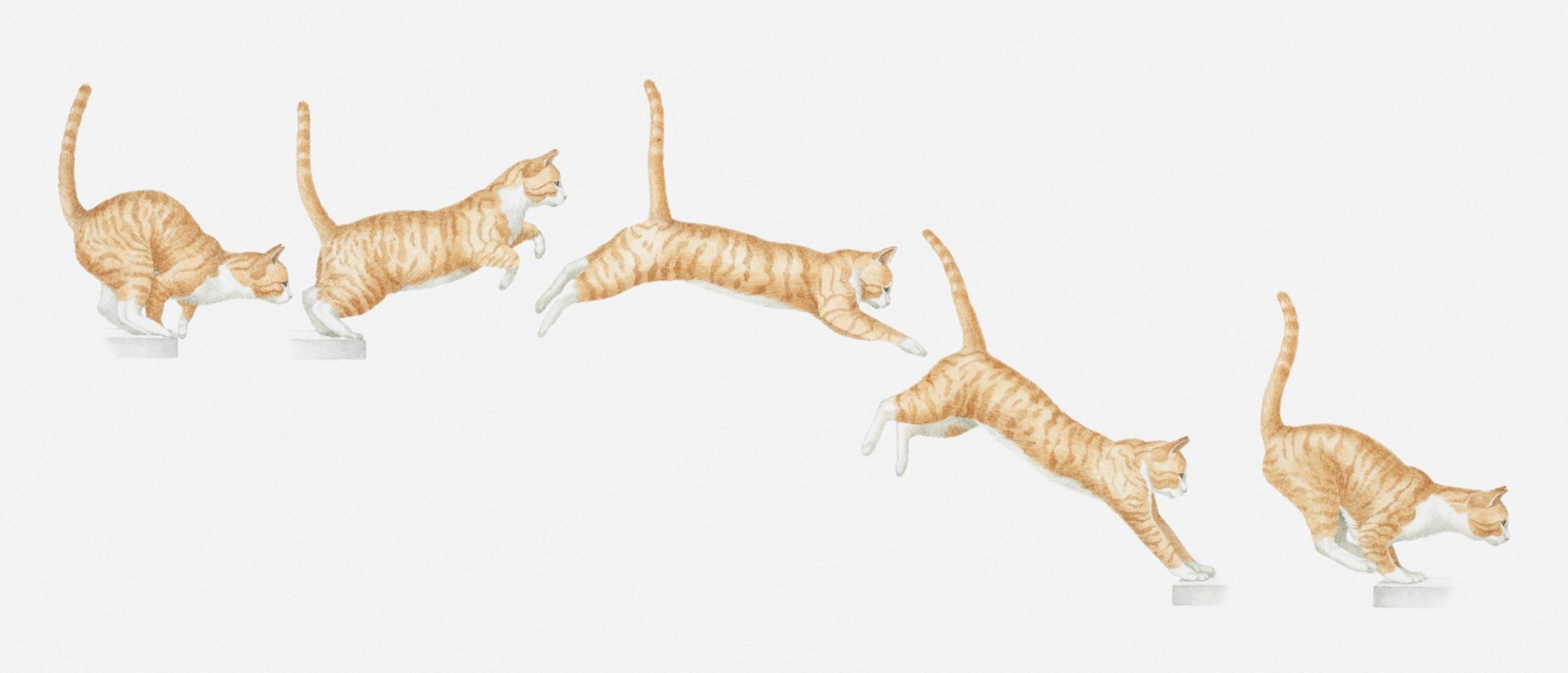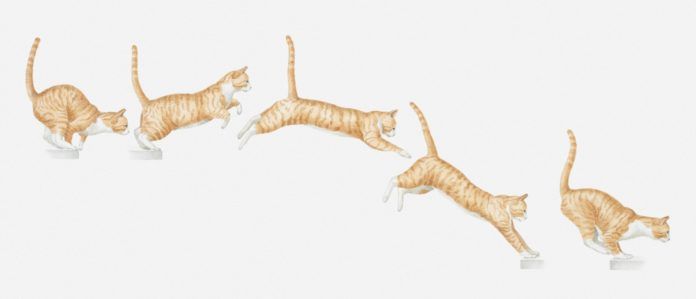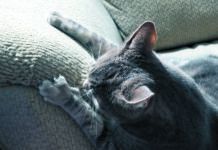Cats are curious, fascinating, mysterious creatures and we’re constantly learning more about them — sometimes, it’s like solving a mathematical equation. For example, jumping. We know that, by nature, cats are three-dimensional animals that incorporate vertical space as part of their territory both as a predatory skill and as a protection to escape predators.


That a cat can jump five to seven times its height is a fascinating feline fact. Perhaps you’ve seen nature programs of a leopard hauling an antelope carcass up a tree; that takes immense strength, control and agility. Have you ever thought about the physics of how cats, big and small, accomplish that amazing feat?
Powerful hindquarters comprised of strong leg and back muscles combined with a flexible spine give cats the physical ability to release powerful bursts of energy. Watch your cat prepare for a jump and you’ll notice she starts in a crouched position, pushing back into the hind legs one, two, three or more times. The cat isn’t hesitating but rather pushing against the substrate (for example, the floor), contracting and extending muscles building kinetic energy to launch the perfect jump. (Yes, the same principle as a coiled spring.) The fine back muscles and tail aid balance to stick a perfect landing while the sharp claws may be used to gain purchase. It’s a beautiful blend of feline form, function and physics.




